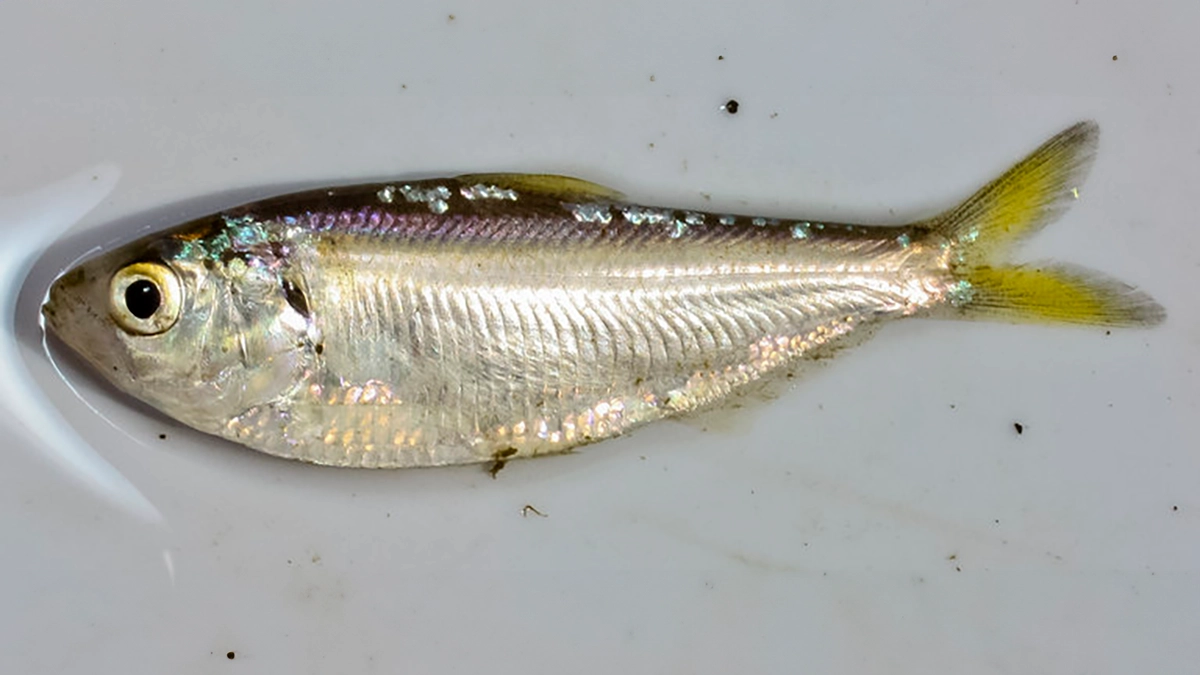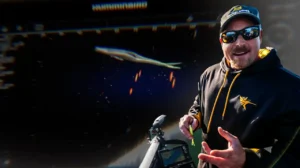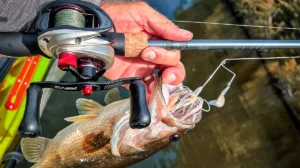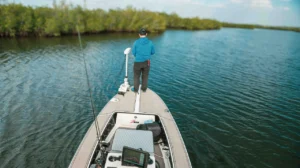At a time when other bass anglers grumble about the snow and chill of winter, Mike Webb celebrates his favorite time of the year to be out.
Webb, a longtime guide on Table Rock Lake in the Missouri Ozarks, views December as the best month to reel in impressive mixed-bag catches of all three of the reservoir’s black bass species – spotted, largemouth and smallmouth.
Not spring. Not fall. Not early summer. We’re talking about winter, a time many bass fishermen consider the off-season.
“Starting in December, the bass school up and follow the shad out to deeper water” said Webb, who has been a member of Bass Pro Shops’ pro staff for almost 30 years. “That’s the key — finding the concentrations of baitfish.
“Once you do that, the bass usually aren’t far away.”
We’re talking about deep water, often far from the nearest bank. More than once, Webb has heard others say, “What’s that guy doing out there in the middle of the lake?”
Well, he’s catching bass — and plenty of them.
It isn’t unusual for Webb and his guide clients to have 50-fish days in the cold of winter. And just as impressive, there are some sizable bass in that catch— largemouths in the 4-pound range and spotted and smallmouth bass 3 pounds and sometimes bigger.
For Webb, who runs Webb’s Guide Service, it all comes down to an understanding of how the baitfish act in the clear, deep water of Table Rock and other Ozarks reservoirs.
Once fall tapers off, the baitfish begin a migration to deeper water. In early December, Webb positions his boat in 70 feet water off the long, bare points (which Webb calls runouts) and works his way shallower until he spots schools of baitfish and bass.
Bass fishermen are accustomed to searching for ambush cover such as brush timber or rocks that the bass will relate to, but that isn’t a factor in this type of winter fish, Webb said.
It’s all about finding the bass’ food.
Finding the Groceries
Technology makes that task of finding that food easier than it once was. Webb can use his side imaging, fish finders and forward-facing sonar to locate active fish.
In early December this year, he has found schools of baitfish in 42 feet of water, most relating to the bottom. Later, the fish will usually be in deeper water as they move into the long, deep creeks. But often those fish will be suspended.
Once Webb has caught bass at one depth, he can usually establish a pattern and find the baitfish and bass at a similar depth elsewhere.
He typically uses his electronics to follow a creek channel right to the back.
“The shad are always in the channel,” Webb said. “Very few will break with that. I think they just follow the channel as a travel way.”
Webb looks for balls of baitfish, which indicates they are being pursued, he said. If they are strung out, “it generally means they aren’t being chased,” he said.
Equipment
Webb uses a vertical presentation. He relies on three lures: a Rapala Jigging Rap, a Jewel Scuba Spoon (jigging spoon) and a Bass Pro Shops Speed Shad (a soft-plastic paddletail grub).
When the shad are relating to the bottom, he drops his bait until his line goes slack, then he reels it up about a half-foot from the bottom.
His setup:
- A 6 ½-foot Bass Pro Shops Johnny Morris Carbonlite spinning rod
- A Bass Pro Shops Johnny Morris Signature 3000 Series spinning reel
- 8-pound-test Bass Pro Shops monofilament line
- A swivel with a one-foot leader of slightly heavier monofilament line tied to it to allow for more action of the lures he is fishing vertically
The cadence of working those baits is crucial, Webb said. He often shakes the bait in place for a while, then pops his line so that it jumps up about 3 feet before settling back.
“The fish almost always hit on the drop,” Webb said. “I think that imitates an injured minnow trying to take off.”
Seeing is Believing
With today’s electronics, Webb and other fishermen can watch the scenario unfold.
“The bass will follow the school of baitfish, then all of a sudden dart into them and feed,” Webb said. “You can follow a school of fish trailing shad for quite some time.”
The winter pattern will continue through January and February. In fact, Webb caught his largest bass on Table Rock (just over pounds), on April Fool’s Day, 2013.
He lured the fish, which he spotted on his graph, on an Alabama rig in 30 feet of water.
“As long as it (the air temperature) is 40 degrees or above, I’m going fishing,” he said. “Sunny days are best in the winter. The sunshine seems to pull those shad up and activates the fi














